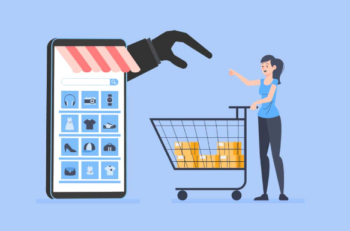
Dark patterns are sneaky tricks used in online shopping to make people choose things that might not be good for them. These tricks take advantage of the part of the brain that deals with emotions and decision-making.
The Ministry of Consumer Affairs (MCA) wants big online shops like Amazon, Flipkart, Nykaa, BigBasket, Reliance Retail, Swiggy, and Meesho to stop using these sneaky tricks. Instead, they should focus on making things clear and honest for users.
A dark pattern is like a tricky design in a website or app that tries to make users do things they might not want to do, like buying expensive insurance or signing up for bills they didn’t plan on.
Many big companies, including Facebook, Microsoft, LinkedIn, Amazon, and Apple, use these tricky designs in their strategies.
Here are some tricky things that online shops sometimes do:
- Hidden costs: They add extra charges, like shipping or taxes, during checkout without telling you upfront.
- Urgency tactics: They create a sense of urgency, like saying there’s a limited-time offer, to make you buy quickly without thinking.
- Social proof: They show fake customer reviews to make you think a product is better than it really is.
- Auto-enrollment: They sign you up for things without asking, leading to unexpected charges.
- Confusing navigation: They make it hard for you to find what you need or finish buying something, causing frustration.
- Pre-checked boxes: They automatically select extra things for you to buy, hoping you won’t notice.
- Limited options: They give you only a few choices, usually favoring more expensive ones.
- Bait-and-switch: They advertise something at a good price but switch it to something more expensive when you’re about to buy.
- Fear of missing out (FOMO): They make you feel like you’ll miss out on something good if you don’t buy quickly.
- Complex pricing: They make prices confusing with hidden fees or differences based on things like where you live or what you bought before.
why it is called dark pattern
The term “dark pattern” was coined by Harry Brignull, a user experience researcher, in 2010. He used the term to describe “a user interface that has been carefully crafted to trick users into doing things, such as buying overpriced insurance with their purchase or signing up for recurring bills”.
The term “dark” is used to emphasize the deceptive and manipulative nature of these design practices. Just as darkness can obscure and conceal, dark patterns can hide important information or manipulate users’ perceptions to influence their behavior.
Here are some reasons why dark patterns are called “dark”:
-
They are deceptive: Dark patterns often exploit users’ cognitive biases and psychological vulnerabilities to trick them into making decisions that are not in their best interests.
-
They are manipulative: Dark patterns are intentionally designed to influence users’ behavior, often without their knowledge or consent.
-
They are unethical: Dark patterns can lead to negative consequences for users, such as financial losses, unwanted subscriptions, or privacy violations.
-
They are hidden: Dark patterns are often hidden in the design of websites and apps, making it difficult for users to detect them.
Some real-life examples of dark patterns used by e-commerce platforms:
1. Hidden costs: Amazon is notorious for adding hidden costs to purchases at checkout. For example, they may charge shipping fees even for items that are eligible for free shipping if you order them individually. They may also add handling fees or taxes that are not disclosed upfront.
2. Urgency tactics: Many e-commerce platforms use countdown timers or limited-time offers to create a sense of urgency and pressure users into making quick decisions. For example, a website might display a message saying “This offer expires in 10 minutes!” This can lead to impulse purchases that users may later regret.
3. Social proof: Websites often display fake or misleading customer reviews or testimonials to influence users’ perceptions of a product or service. For example, a website might display a five-star rating for a product even if the majority of real reviews are negative.
4. Auto-enrollment: Many e-commerce platforms automatically enroll users in optional services or subscriptions without their explicit consent. For example, a website might automatically add a subscription to a service like Norton Antivirus to your order without asking you first.
5. Confusing navigation: Some websites make it difficult for users to find the information they need or navigate through the checkout process. This can lead to frustration and abandonment. For example, a website might make it difficult to find the contact information or return policy.
6. Pre-checked boxes: Many websites pre-select optional add-ons or services without clear disclosure. This can lead to users inadvertently agreeing to charges they didn’t intend to incur. For example, a website might pre-check a box for a gift wrapping service without making it clear that this is an additional charge.
7. Limited options: Some websites provide users with a limited set of choices, often favoring more expensive or less favorable options. This can restrict users’ decision-making process and lead to suboptimal choices. For example, a website might only offer two shipping options: one that is very expensive and one that takes a very long time.
8. Bait-and-switch: Some websites advertise products or services at enticing prices and then switch users to more expensive alternatives during the checkout process. This is a deceptive and unfair practice. For example, a website might advertise a product for $99, but then during checkout, they add a $50 shipping fee.
9. Fear of missing out (FOMO): Many e-commerce platforms create a sense of FOMO by emphasizing limited availability or exclusive offers. This can pressure users into making quick decisions without fully considering the product or service. For example, a website might display a message saying “Only 10 left in stock!”
10. Complex pricing: Some websites use complex pricing structures with hidden fees or price differences based on factors like location or purchase history. This can make it difficult for users to compare prices accurately. For example, a website might charge a different price for a product depending on the user’s location.
Some major companies that have been accused of using dark pattern tricks
-
Amazon: Amazon has been criticized for a variety of dark patterns, including hidden costs, urgency tactics, and confusing navigation. For example, Amazon has been known to add hidden fees to purchases at checkout, such as shipping fees and handling fees. They have also been criticized for using countdown timers and limited-time offers to pressure users into making quick decisions. Additionally, Amazon’s website can be difficult to navigate, making it difficult for users to find the information they need.
-
Google: Google has been accused of using dark patterns in its search results and advertising. For example, Google has been known to bury organic search results in favor of paid advertisements. They have also been criticized for using tracking cookies to collect data on users without their consent.
-
Facebook: Facebook has been accused of using dark patterns to manipulate users’ behavior. For example, Facebook has been known to use social proof to influence users’ decisions. They have also been criticized for using auto-enrollment to sign users up for optional features without their consent.
-
Apple: Apple has been accused of using dark patterns in its App Store and iTunes. For example, Apple has been known to use pre-checked boxes to add optional charges to purchases. They have also been criticized for making it difficult for users to unsubscribe from recurring subscriptions.
-
Netflix: Netflix has been accused of using dark patterns in its pricing and recommendation algorithm. For example, Netflix has been known to charge different prices for the same service depending on the user’s location. They have also been criticized for using their recommendation algorithm to show users content that is likely to keep them engaged, even if it is not in their best interests.
Some legal cases involving dark patterns
-
In 2016, the Federal Trade Commission (FTC) fined Amazon $1.4 million for using deceptive tactics to trick users into signing up for a paid subscription service. The FTC found that Amazon had used pre-checked boxes and misleading language to make it appear as though users were agreeing to a free trial of the service when they were actually agreeing to a paid subscription.
-
In 2017, the FTC sued Epic Games, the developer of the popular video game Fortnite, for using deceptive tactics to trick children into making unauthorized in-game purchases. The FTC found that Epic Games had used a variety of dark patterns, including confusing button placement and hidden costs, to make it easy for children to make unauthorized purchases.
-
In 2022, the Italian Data Protection Authority (DPA) fined Google €9.5 million for using dark patterns to undermine users’ informed choices regarding their privacy settings. The DPA found that Google had made it difficult for users to opt out of location tracking and other data collection practices.
In addition to these legal cases, there have also been several regulatory actions taken against companies for using dark patterns. For example, in 2021, the European Union passed a new directive on unfair business practices that specifically prohibits the use of dark patterns. The directive states that “a commercial practice shall be deemed to be unfair if it … is misleading, by exploiting the consumer’s vulnerability, fear of embarrassment, or high-pressure tactics.”
These regulatory actions and legal cases are a sign that the tide is turning against dark patterns. As consumers and regulators become more aware of these deceptive tactics, we can expect to see more companies being held accountable for their use of dark patterns.
How to avoid getting trapped in dark patterns:
-
Be aware of dark patterns: The first step to avoiding dark patterns is to be aware of them. Familiarize yourself with the common dark patterns used by e-commerce platforms and other websites and apps.
-
Read the fine print: Don’t just click “agree” without reading the terms of service, privacy policy, and other disclosures. Pay attention to hidden fees, auto-enrollment options, and other potential dark patterns.
-
Be skeptical of urgency tactics: Don’t let countdown timers or limited-time offers pressure you into making a quick decision. Take your time and consider your options carefully before making a purchase.
-
Question social proof: Don’t assume that positive reviews or testimonials are genuine. Be wary of websites that use fake or misleading reviews to influence your decisions.
-
Be careful with pre-checked boxes: Before you complete a purchase, make sure you uncheck any pre-checked boxes that add optional charges or services.
-
Limit your exposure to tracking cookies: Use privacy-focused browser extensions or ad blockers to limit the amount of data that websites can collect about you.
-
Report dark patterns: If you encounter a dark pattern, report it to the relevant authorities, such as the FTC or the Better Business Bureau. You can also help raise awareness by talking to your friends and family about dark patterns.










